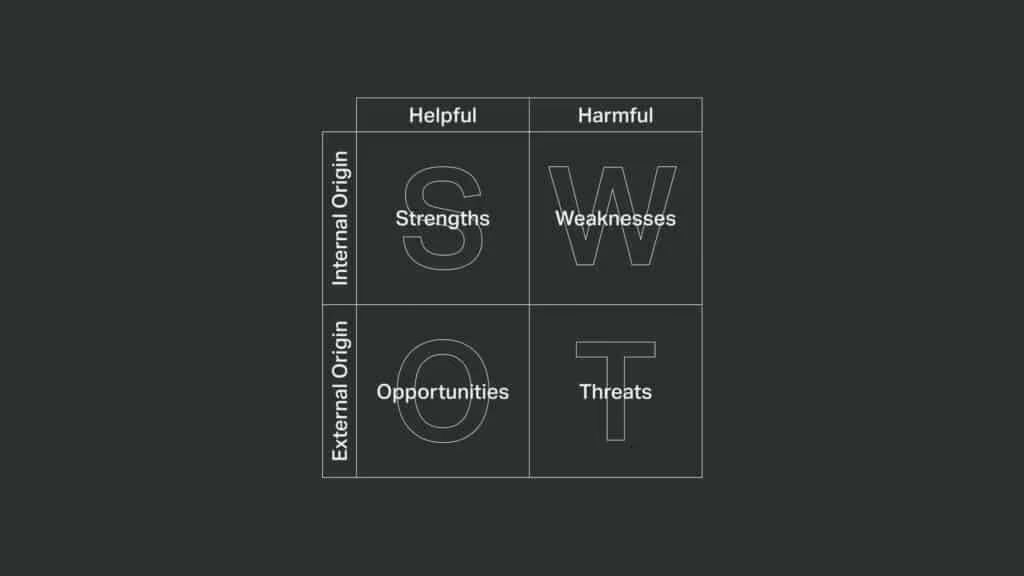How to Find Your Nonprofit Target Audience: 3 Tips and FAQs

Categories
Publish Date
Services
Share

Ready to Tell Stories That Move People?
We help nonprofits craft narratives that inspire action, build trust, and raise more support. Let’s Bring Your Story to Life!
As leaders in the nonprofit digital marketing sector, we understand the importance of reaching the right audience to amplify your organization's impact and how that fits into a well-crafted nonprofit marketing plan.
In this blog post, we'll dive into three essential tips for finding your nonprofit target audience and address frequently asked questions tailored to nonprofit leaders seeking effective marketing strategies:
- Nonprofit Target Audience FAQs
- 3 Steps for Refining a Nonprofit Target Audience Strategy
- Case Study: Successful Nonprofit Target Audience Strategy
Whether you're a seasoned nonprofit professional or just starting your mission-driven journey, this guide will equip you with practical insights to identify, engage, and cultivate your ideal audience, ultimately driving your mission forward with purpose and precision. Let's dive in!
Nonprofit Target Audience FAQs
What is a target audience in marketing?
Generally speaking, a target audience is the group of potential consumers or supporters you aim to engage with your marketing materials.
Nonprofit target audiences typically include:
- Ddonors
- Volunteers
- Partners
- Beneficiaries
- Residents
- Advocates who champion the organization's mission in other ways,
Nonprofits can have multiple target audiences depending on the campaign focus and goals. For example, a campaign focusing on building a relationship with your nonprofit will yield a nonprofit audience that differs from a campaign focusing on corporate partners and sponsors or your nonprofit product suite and offerings.
Why is understanding my nonprofit's target audience important?
Understanding and effectively engaging with your diverse nonprofit target audience is essential to maximize your reach, impact, and sustainability. By honing your marketing efforts and sending tailored messages to this specific audience, you can boost the resonance and impact of your efforts and propel your mission toward a better world for all.
How does segmentation work?
Audience segmentation involves sending personalized communications to groups of your target audience based on shared characteristics. Segmentation requires analyzing demographic data such as age, gender, location, income level, and education and psychographic factors like interests, values, attitudes, and behaviors to get a full picture of possible segmentation criteria.
This information enables organizations to create detailed audience profiles or personas representing different segments of their target audience.
For nonprofits, audience segmentation may involve categorizing donors based on giving history, frequency of donations, or preferred causes. Volunteers might be segmented based on skills or availability. Community members and partners could be segmented according to their relationship with the organization, such as beneficiaries, local supporters, or advocates.
Once segments are identified, organizations can develop tailored marketing strategies and messaging that speak directly to each group's unique needs and motivations. This personalized approach enhances engagement and fosters stronger connections and loyalty among supporters.
How often should my team reevaluate our nonprofit’s target audience?
With every campaign, your team should pinpoint the target audience early on in the planning process.
Even outside of a campaign, the team should be assessing marketing metrics to see if their current audience-targeting tactics are working.
How can a nonprofit marketing agency help?
Utilizing a nonprofit marketing agency can help clarify this process and provide professional advice every step of the way. Marketing your organization, including identifying and aiming for an optimized target audience, will bring your organization success that helps you continue forward in your mission for a better world. None of this can happen without a strong partnership—a truly collaborative client/agency relationship.
When searching for a nonprofit marketing agency, research their specialties or services (such as branding or marketing) before getting set up.
3 Steps for Refining a Nonprofit Target Audience Strategy
Define your campaign goals.
Defining goals from the beginning of the campaign ensures you stay on track to succeed. When setting goals for your campaign, make sure you:
- Define Mission-Aligned Goals. Align campaign objectives with your nonprofit's mission and values to ensure purpose-driven efforts. Utilize a SWOT (strengths, weaknesses, opportunities, and threats) analysis to identify and evaluate your objectives.

- Set Measurable Objectives: Define SMART (Specific, Measurable, Achievable, Relevant, and Time-Bound) goals to address the interests and needs of target audience segments and key performance indicators (KPIs) to track campaign progress effectively.
- Emphasize Long-Term Impact: Prioritize sustainability and lasting change to advance organizational goals and drive meaningful social impact.
Create audience segments.
By understanding your audience and what motivates them, you can identify key segments to prioritize and tailor your outreach efforts effectively. That’s why comprehensive audience research is crucial before refining your nonprofit's target audience strategy. This involves gathering data on your current supporters, volunteers, donors, and community members to gain insights into their demographics, interests, preferences, and behaviors.
To form your segments, you can utilize surveys, interviews, analytics tools, and social media listening to gather qualitative and quantitative data.
Working with an experienced professional marketing agency (such as Fifty & Fifty) can provide more comprehensive strategy recommendations and equip you with a team of professionals with experience in putting together target audiences.
Iterate based on feedback and report on success.
Target audience identification strategies should be dynamic and pivot based on data. Similarly to creating your target audience, you can utilize tools to collect feedback and implement it back into your strategy and further define your audience. Some of our favorite ones include:
- A/B Testing: a method where you try out two versions of your message or campaign—whether it's an email, a donation page, or a social media post—to figure out which one resonates better with your audiences.
- Support Surveys: a survey to gather valuable feedback from your nonprofit audience. It's like sitting down with a friend over a cup of coffee and asking, "How can we do better?"
- Social Media Listening: a process of tuning into what’s going on in the social media world, reading comments, making note of mentions, and the like.
Case Study: Successful Nonprofit Target Audience Strategy
As a branding agency for nonprofits and mission-driven organizations, we were excited to have the opportunity to work with VolunteerMatch on enhancing the connection between inspired people and inspiring causes.
The VolunteerMatch marketing team was searching for a new agency to refresh its social media strategy and provide ongoing social media management. They wanted to expand their network by elevating their existence in the CSR space and growing these partnerships. With more businesses and organizations focusing on social responsibility, there was an opportunity to build a marketing strategy and implementation plan that would drive brand awareness and partnership growth.
The overall goal of our partnership was to strategize a social media plan around VolunteerMatch’s four current platforms (Facebook, Instagram, Twitter, and Linkedin) that would resonate and result in more engagement with their audiences (Nonprofits, Volunteers, and CSR partner platforms).
We approached these goals initially by sharpening their target audiences (nonprofits, Volunteers, and CSR partner platforms) based on campaign objectives. In this case, we focused on providing social media services, including hashtag and optimized posting time recommendations, content and theme suggestions, execution of plans, reporting and analysis, and ongoing oversight and collaboration.
From here, we grew into a campaign, #GetThatGrin, geared explicitly towards volunteer recruitment. We began with a campaign concept and strategy and developed into an ongoing effort to recruit volunteers through social media, email, paid advertising, and landing pages. This included brightly colored graphics and videos that captured the audience and extended the efforts of connecting inspiring people with inspiring opportunities.
We tracked our efforts throughout the implementation, adjusting our strategy as needed to ensure optimized results.

Wrapping Up
Refining your nonprofit target audience strategy is vital to creating impactful marketing campaigns that advance your mission. By defining mission-aligned goals, segmenting your audience effectively, and emphasizing long-term impact, you can ensure that your efforts resonate with your supporters, volunteers, partners, and community members.
By partnering with a nonprofit marketing agency, such as Fifty & Fifty, you'll receive expert guidance and strategic recommendations tailored to your organization's needs. Start your journey towards a more vital, more resonant nonprofit today!
Have a project or idea?
We believe in the hard work people are doing to address the world's most pressing problems. Every day, our agency fights to turn visions of social change into concrete realities.





